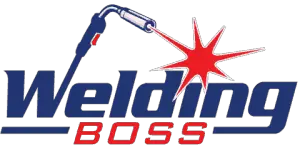This post contains affiliate links to products, services, or education. We may receive a commission for purchases made through links.
While most people have heard of torch welding and TIG & MIG welding, fewer people have ever heard of friction welding. That’s because rather than being a handheld technique, friction welding is a forge-based metal fabrication process that can be used to fuse either similar or dissimilar metals.
So, what are the pros and cons of friction welding? Friction welding is an assembly-level metal fabrication that can be used to join metals without filler. The process of friction-welding the two metal pieces together naturally cleans the weld site for a better bond. However, friction welding is restricted to forge operations and is expensive.
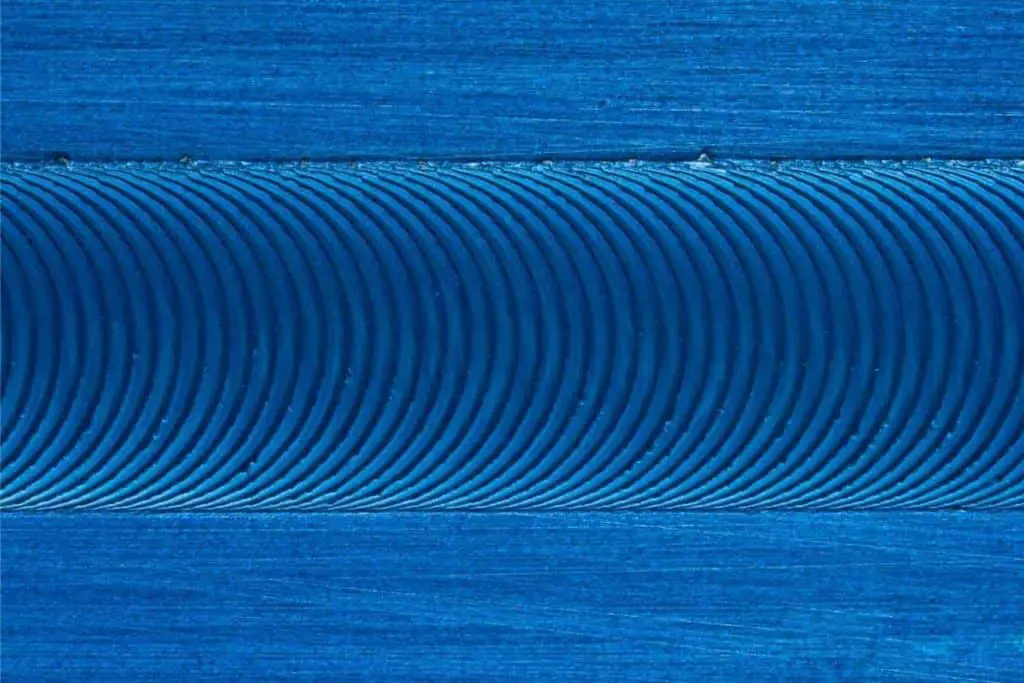
Friction welding isn’t the proper welding choice for all applications. However, for many industrial welding operations (especially those that involve pressurized craft), it can be an excellent alternative to other types of forge-based metal fabrication. Read on to find out more about the art of friction welding and how it is used in metalworking.
What is Friction Welding?
Friction welding is a type of welding that is conducted in a furnace environment, usually as part of an automated factory assembly line. Two metals are fused together with high velocity, joining them and making them one. Unlike torch welding or arc welding, which are controlled by individual human operators and are performed by handheld techniques, friction welding is performed by mechanical equipment. It uses high-speed friction to meld two sections of metal together.
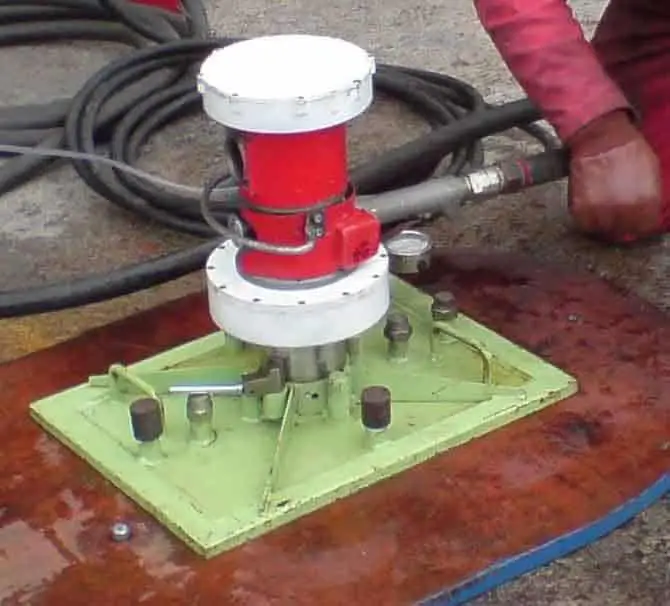
The friction that is used in friction welding is generated by the force of rotational movement at opposing directions, which inevitably builds up friction-based heat at the point of juncture. While the metal parts are rotated and heated, they are also subjected to high levels of pressure that help ensure a strong metallurgical bond.
A significant difference between friction welding and traditional fusion welding is that in friction welding, no weld pool is ever created. Instead, the two pieces of metal become bonded at the contact surface level by thermo-mechanical movement. This makes friction welding an especially good choice for practical applications where there is some leeway with the resulting weld spacing or surface texture.
Most (over 90%) of friction welding equipment is designed to weld butt joints. Not only are these joints used in pressurized applications that benefit from the structural integrity of a friction weld, the type of rotating equipment necessary to rotate a joint to welding temperatures is easier to design around a butt joint. Like other types of heat-based welding, friction-welded joints may require tempering for strength.
How Does Friction Welding Work?
Even in metalworking materials that appear entirely smooth on the surface, there are a series of microscopic spikes on a metallic surface called asperities that are responsible for frictional heat. When these asperities interact with each other on two surfaces that are joined face-to-face, the resistance created between them causes heat to build up.
Friction welding takes advantage of this physical phenomenon by using the heat generated through friction to create a strong, full-contact metallurgical bond on par with the bonds created with traditional fusion-based welding.
In friction welding, the applied pressure is just as crucial in establishing the metal bond as applied frictional heat and resistance. The two forces combined are what lead to the formation of the final welding bond.
Types of Friction Welding
There are four primary types of friction welding:
- Rotary friction welding
- Linear friction welding
- Friction stir welding
- Friction stir spot welding
The two types of rotary friction welding are direct-drive friction welding and inertia friction welding. There are also specialized friction welding techniques such as orbital friction welding and vibrational friction welding, which are similar to rotary and linear friction welding but involve slight changes to the movements of the joint.
The main contrast in the types of friction welding lies in the mechanical steps used to generate frictional heat. All frictional welding equipment operates on a series of motors, drives, and flywheels that spin welding components at a high enough speed to generate welding levels of frictional heat.
What Is the Difference Between Inertia Friction Welding and Direct Drive Welding?
In direct drive welding, the energy used to create rotation is directly inflicted on the spindle of the welder by the friction welder’s motor. This kind of rotary friction welder can spin for as long as it is supplied with power. Since it generates more heat than inertia friction welding, it also tends to require a longer cooling time.
The significant difference between inertia friction welding and direct drive welding is that inertia friction welding requires much higher rotational speeds to achieve a welding bond. Inertia friction welding is commonly found in friction welding that involves thermoplastics, but not always. It is very commonly used with lightweight metals in the aerospace industry as well.
Here is a great video demonstrating friction inertia welding.
Regardless of their differences, both types of friction welding operate on the same basic principle—using the heat generated by frictional resistance at high speeds to fuse metals.
Pros of Friction Welding
There are many benefits of friction welding that make it a popular form of welding in automated factory assemblies. Here are some of the pros associated with friction welding:
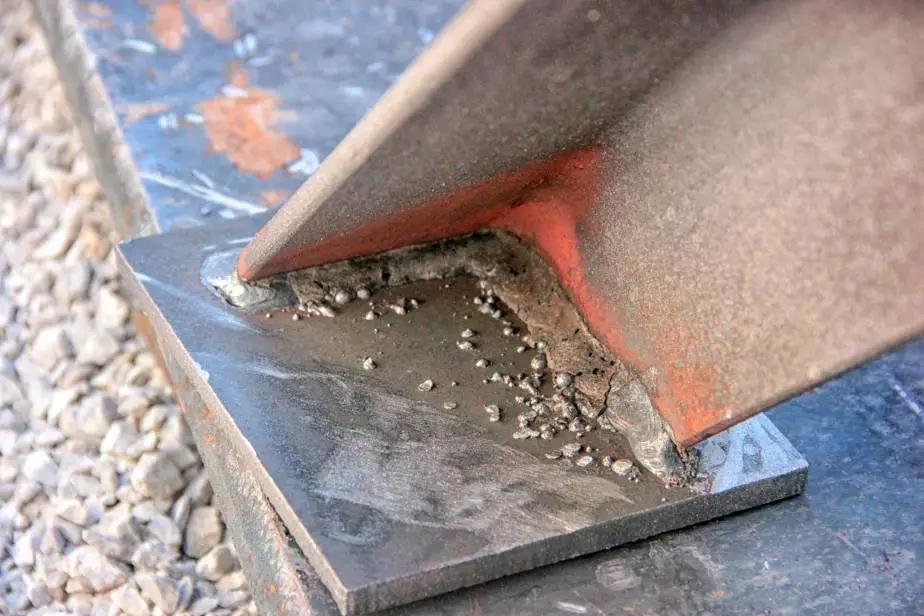
- No slag: Unlike other types of welding, friction welding doesn’t produce any kind of spatter or slag that could either hurt the structural integrity of the joint or affect the visual appearance of the resulting weld. This also reduces the risk of injury to the welding machinist from flying particles or molten metal.
- Completely solid contact: Unlike handheld welding, where you have to worry about cracking at the edges of the weld seam or as the result of inconsistent heat application, friction welding ensures an even application of heat across the entire welding surface throughout the weld. This results in a more mechanically perfect weld than could be accomplished by hand.
- Can be run on standard power: The same voltages that run electric motors can run friction welding equipment, which makes it a suitable choice for factory assemblies. While friction welding equipment typically involves heavy machinery, it is not particularly complicated.
- No filler: There is no need to use consumables like filler rod or wire with friction welding. The surfaces of the two pieces of metal are forged together face to face without the need for any other material between them. Not only does this reduce the necessary gaps in engineering design, allowing for a more flush and aerodynamic design, but it is also more efficient.
- No shielding gas: Unlike TIG and MIG welding operations, friction welds do not require a shielding gas or other flux environment to prevent problems. This is an important consideration since the inert gas mixtures used in electrical welding can be costly. The introduction of shielding gas to a welding operation can also increase the risk of operator error as the welder attempts to control both the welding torch movement and the shield gas pedal at once.
- No generation of smoke or fumes: Unlike other types of welding, which can produce fumes that are dangerous for people to breathe in, friction welding doesn’t produce any kind of smoke or particles. This makes friction welding an environmentally friendly form of welding and also a safer form of welding than combustible welding techniques that generate carbon monoxide.
- No surface prep necessary: Unlike traditional welding techniques, which require meticulous cleaning of the base metals before welding, friction welding flash-cleans the base metal through frictional mechanics. Surface prep and cleaning of welding surfaces is one of the major time sinks associated with conventional welding, so eliminating it is a significant leap forward in metalworking efficiency.
- Fast joining time: While traditional welding operations can take several hours as sections of welding seam are allowed to cool and cure, friction welding is accomplished in the space of a few seconds. Not only does this allow each finished piece to be welded more quickly, it means that a manufacturing plant can turn out more welded pieces per hour, increasing the productivity of the plant overall.
- Reduced weight: For everything from helicopters to shuttles, aerospace industries depend on friction welding practices to help keep machines light and off the ground. With flight mechanics, every extra pound of ballast counts against an air vehicle’s capacity, so weight reduction is a vital engineering concern.
- Durability: Frictional welding not only turns out strong welds, it also turns out welds that remain strong. This is especially crucial in the kinds of high-performance environments that friction-welded components are subjected to in post-production operations. The durability of friction welding is one of the reasons it is so prevalent in marine, air, and space industries.
- Lower temperatures: In general, friction welds can be successfully performed at lower temperatures than other welding operations, which reduces the base metal’s vulnerability to heat affectation. There is also no generation of external heat, which dramatically reduces the risk of burns and other welding-related injuries.
- Lower manufacturing costs: Because friction welding doesn’t require filler or flux and can be automated, it costs much less overall than other kinds of welding, even though the process itself is still expensive to set up at the factory design level. Lowered manufacturing costs also result in higher profits and lowered costs for consumers.
- Airtight welds: The welds produced by a friction weld are airtight, which makes them optimal welds for both air and water vehicles, especially those operating in high-pressure environments. Stable friction welds help protect the operators of these craft from decompression accidents.
- No operator mistakes: One of the biggest challenges of welding is that it takes years for a welder to learn how to consistently weld a joint at high temperatures without introducing human error or risking human injury. Friction welding removes this problem by mechanizing the welding process, making it perfect for automating welding operations in a factory setting.
- Consistent results: Because friction welding is the result of a mechanized process rather than created by the human hand, the resulting welds are more consistent and not subject to introduced defects such as porosity or brittleness.
- Solid-state operations: Unlike other forms of welding that require metals to be heated to the point of a liquid state, friction welding is solid-state welding, which means the base metals involved never break down, and no filler is melted.
- Results in an inconspicuous weld: The low profile of a friction weld means that it can be rendered nearly invisible, minimizing its effect on visual design.
As you can see, there are multiple benefits to using friction welding in the manufacturing process, most of which result in a more durable weld overall. For certain kinds of joints, friction welding offers several advantages. But it isn’t the right welding choice for every job.
Cons of Friction Welding
Along with the benefits that friction welding offers, there are also some disadvantages associated with this type of welding, too. Here are some of the drawbacks of friction welding:
- Only suitable for specific joints: There’s a reason that over 90% of the friction welding equipment manufactured is designed to created butt joint welds. Other types of welding angles can be challenging to achieve with friction welding equipment. That means that despite the utility of friction welding, you still need other types of welding to perform a wide variety of welds.
- Lack of human control: While a friction welding machine removes operator error, mechanized welding also removes operator judgment, which can be useful in welding applications where specialized welding (such as upside-down welding) is needed. Humans can strategically tack weld areas to reinforce them on the fly or modify a design, while automated machinery is not capable of design modification.
- Expensive equipment: Friction welding and the types of welding conducted by amateur backyard metalworkers with TIG setups are very different types of welding. Friction welding is almost exclusively used in industrial and factory settings to automate assembly welding. The average welder cannot afford to friction weld in the private sector.
- Large and heavy equipment: The equipment necessary to generate the heat and energy capable of friction welding metal joints is not the kind of equipment you’re going to find lying around in someone’s garage. This is welding at the industrial level.
- Restricted to forge operations: Unlike TIG and MIG welding units or torch welding, which can be transported to work sites and can be used in outdoor settings, friction welding is confined to a forge environment. This makes it much less accessible to laypeople or amateur metalworkers than other types of welding equipment.
- Little-to-no DIY applications: Anyone can pick up a propane blowtorch and learn how to weld, but friction welding is a specialized mechanical operation that is only likely to be dealt with by machinists or mechanical engineers. Unlike stick welding or TIG welding, friction welding does not have home improvement value.
- No invisible termination. So far, mechanical engineers have not been able to figure out how to design friction welding equipment that doesn’t form a hole where it stops.
- Automaton and worker’s rights. As automaton technology in welding processes continues to advance, it is threatening the livelihoods of conventional welders. While this is a somewhat inevitable process with the advent of technology across all sectors of human society, it is still something to consider.
Overall, friction welding is very effective, but only useful in a few scenarios. However, friction welding is used across many industries for metalworking and assembly.
What Can You Weld with Friction Welding?
While it isn’t suited for widespread use by individual welders, friction welding is used across metal fabrication industries for joint assembly. These are some of the things that are welded with friction welding:
- Thermoplastics: Because thermoplastics require pressurization to bond to metal, friction welding is one of the few forms of welding that can effectively bond thermoplastics to metals without losing structural integrity.
- Dissimilar metals: Friction welding is capable of welding together different types of metal, such as aluminum, to steel without creating a sizeable heat-affected area. This is especially important in pressurized welding applications where metal must retain tensile strength throughout the assembly for safety reasons.
- Similar metals: The heat generated by friction welding is comparable to the heat levels generated by traditional fusion welding, which means that friction welding is as capable of welding stainless steel as anything else. Friction welding offers the advantages of welding techniques such as TIG welding without the disadvantages such as operator defects, dangerous handheld equipment, or consumables.
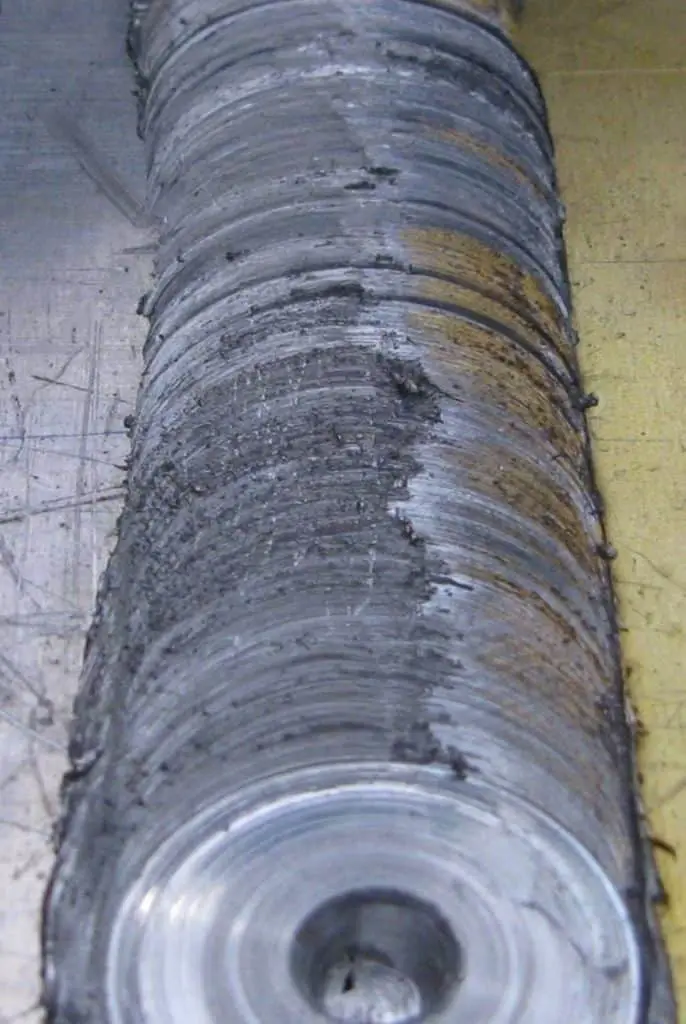
Friction welding is especially prevalent in aerospace and marine manufacturing, where it is used to create safe, solid joints without sacrificing aerodynamics or increasing the weight of the assembly through the addition of fillers. Friction welding is also used in nuclear engineering applications.
Here are some of the other industries where friction welding crops up:
- Automotive assembly
- Oil drilling equipment
- Industrial printing assemblies
In these industries, frictional welding is often used as a way to ensure quick, strong bonds between dissimilar metals. It’s especially crucial in pressurized systems where weaknesses in the base metals can lead to a blowout or pressure-related malfunction.
What is Inertia Friction Welding?
Inertia friction welding is friction welding that is accomplished via a series of flywheels that use a motor and a spindle shaft to bring the welding joint up to high levels of rotational speed and heat before disengaging.
This process heats and plasticizes the surfaces of the two joined pieces through the force of inertia friction, causing a full-strength bond to be formed once the pieces are allowed to stop and cool.
Who Invented Friction Welding?
Rotary friction welding is the oldest type of friction welding and was invented in the 1950s. Friction welding was pioneered by Japanese engineers in the mid-1950s for use in automotive brake manufacturing by Toyota, but soon after, it spread like wildfire across the global metalworking community. One of the newer forms of friction welding, friction stir welding, was invented by Wayne Thomas in 1991.
Since its inception, friction welding has undergone numerous iterations as manufacturers tweak the design of friction welding equipment to take on more and more complicated automations.
How Strong Is Friction Welding?
Friction welding is arguably the most robust welding technique available, for many reasons:
- Low defect rate: Because friction welding is mechanized and doesn’t have a human operator, it isn’t prone to the kinds of defects and human errors that lead to a welded joint’s tensile strength failing as a result of brittleness or heat penetration. Automated friction welding assemblies generate welds that are perfect and (more importantly) repeatable.
- Low temperature: Friction welding is quick and conducted at relatively low welding temperatures, which means it doesn’t do much to change the chemical properties of the base metals. This leads to stable, reliable welds that hold at full-strength (or stronger) than the metals they’re joining.
- No variation: Direct metal-to-metal mechanized operation means that there are no inconsistencies in the weld that could affect tensile strength such as contaminants or unevenly applied heat. These inconsistencies are one of the leading causes of defects that undermine the strength of the weld.
- Full contact: The consistent, uniform direct contact between the two pieces of metal involved in a friction weld makes for a stable, complete bond from one end of the weld to the other. This results in a bond with the strength of a fusion weld (without the operator errors). With this full-contact, there are no weak points that could potentially lead to a loss in tensile strength.
Non-friction welding naturally introduces a weak point to a metal assembly by affecting the metal with high temperatures. Friction welding focuses high temperatures and pressures directly at the point of the weld, which drastically reduces any energy-related effect on the rest of the metal assembly.
These photographs demonstrate the strength that friction welding offers in the final product. Not only are friction welds as strong as the base material, but they are also often more durable at the point of contact than the base metal is elsewhere. Rather than acting as a chink in the armor of a metal assembly, friction welding reinforces it.
Ultimately the strength of a metal welding bond (friction welded or not) depends on the types of material being fused. While a friction weld may be engineered to be technically stronger than the base metal, its tensile and shear strengths will still be lower.
What Are the Special Features of Friction Welding?
There are many aspects of friction welding that make it unique among metal fabrication techniques. Here are some of the features that make friction welding stand out:
- Versatility: In theory, every forgeable metal can be friction welded. Friction welding is especially prized for its ability to bond different metals or bonding together metals with thermoplastics, which most other welding techniques have difficulty doing without significant compromises in the resulting weld.
- Speed: Friction welding operations are conducted at ten times the speed of traditional welding operations, which makes them a godsend for the manufacturing industry. Friction welding is a cornerstone of mass production, particularly in the automotive industry.
- Aluminum welding applications: Aluminum is notoriously tricky for individual welders to work with, but friction welding (particularly friction stir welding) is an excellent welding operation for aluminum binding. Since aluminum is prone to thermal distortion, the low welding temperatures demanded by friction welding prevent those defects from occurring.
These unique features of friction welding aren’t just advantages. They are the aspects of this welding technique that set it apart in the manufacturing industry. Without them, modern society wouldn’t have nearly the level of manufacturing efficiency as it currently does.
When Friction Welding Becomes a Problem
Outside of industrial welding instances, one scenario where you don’t want to see the results of friction welding (but where it might crop up anyway as a nasty side effect) is in automotive suspension. When a wheel bearing on a car has been neglected or broken, the resulting metal-on-metal friction can eventually lead to the same kind of rotational friction welding that is performed in factories.
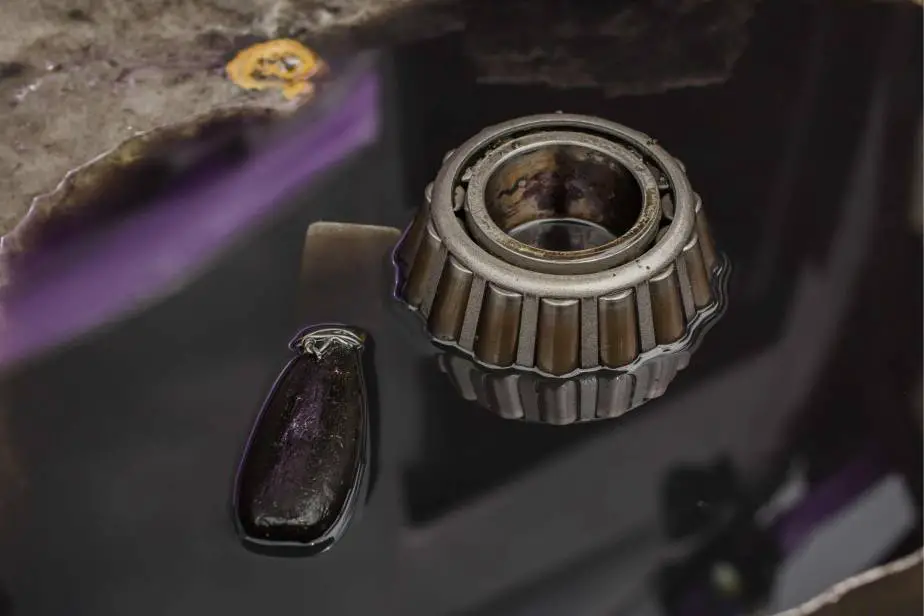
The downside is that if frictional welding happens on your vehicle, you’ll be lucky to avoid a severe car accident as a result. If a wheel bearing on a car is left without lubrication for long enough or becomes defective, the resulting friction in the suspension joint can eventually lock up the wheel entirely. This phenomenon is known as resistance seizure.
Resistance seizure in car bearings is relatively rare, but it has been known to happen in older cars that aren’t well-maintained. To avoid accidentally friction welding your car’s joints together, make sure that your wheels and suspension are inspected and lubricated regularly by a certified mechanic.
Friction Welding Is Wonderful but Limited
Friction welding is such a new metal fabrication technique that metalworkers are still finding out new ways to use it. However, it isn’t the type of welding for everyone. With roots in Japan’s post-WWII industrial revolution, friction welding has always been a cornerstone of automated manufacturing.
While it is restricted to forging environments, friction welding offers many advantages over other types of welding that have resulted in more durable metal assemblies in industries across the world. Even though it only has specialized applications, friction welding is still a powerful tool.
Sources:
https://www.mtiwelding.com/wp-content/uploads/2015/11/friction-welding-forged-quality-Joints.pdf
https://weldingproductivity.com/article/added-friction/
https://www.twi-global.com/technical-knowledge/faqs/faq-what-is-friction-welding
https://spinweld.com/friction-welding/
https://www.pierceindustries.com/resources/friction-welding-everything-need-know/
http://www.en.izumi-mfg.co.jp/fw/about/history.html
https://www.sme.org/technologies/articles/2016/october/friction-welding/
https://interestingengineering.com/friction-welding-process-types-and-advantages
https://www.sciencedirect.com/topics/materials-science/friction-welding
https://blog.mtiwelding.com/what-is-friction-welding
